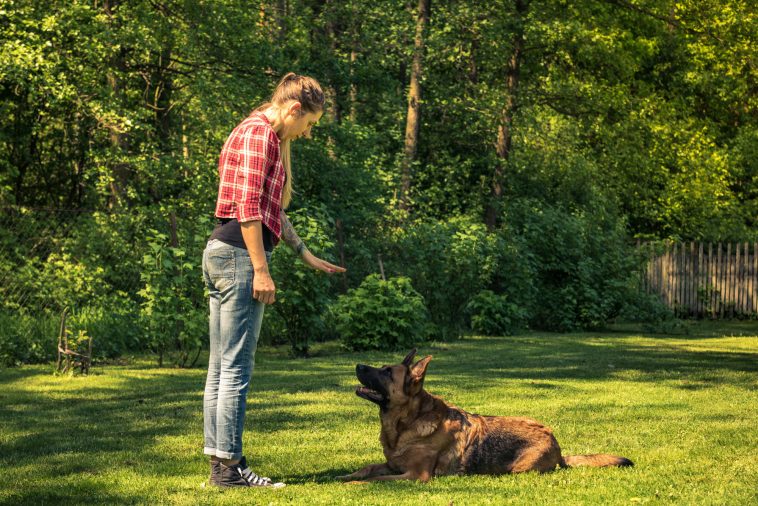Did you know that dogs could save lives instead of being dangerous? Well, they can.
A protection dog can help you create a safe and secure home. They are intelligent animals that can respond to simple commands. They also have a built-in warning system that alerts them of danger.
When you get a dog for protection, safety is a primary concern. A trained dog provides security a pure-bred puppy cannot. Even so, training dogs to be protection dogs is a difficult process.
If you’re interested, read on to know more about protection dog training.
Selecting the Right Candidate
The first step in protection dog training is selecting the right candidate. Temperament and genetic predisposition play a vital role. This is how you determine a dog’s suitability for protection work.
Protection dogs with a balanced temperament, high drive, and good nerves are typically preferred. Additionally, the dog should have the necessary physical attributes and health. They need this to perform the demanding tasks associated with protection training.
Work with a reputable breeder or a professional protection dog trainer. These experts have the knowledge and experience to test a dog’s temperament and suitability for protection work.
They can assess factors such as the dog’s drives, nerve stability, and willingness to work. This ensures that the chosen candidate has the potential to excel in protection dog training.
Basic Obedience Training
Once a suitable candidate gets identified, the training process begins with basic obedience. A protection dog must have a solid foundation in obedience commands. This will ensure precise control in high-pressure situations.
The dog must respond to commands such as sit, stay, down, and come. This level of obedience lays the groundwork for advanced training. It serves as the basis for effective communication between the dog and its handler.
Basic obedience training helps establish a strong bond between the dog and the handler. The dog learns to associate obedience commands with rewards and praise. This positive association motivates the dog to perform the desired behaviors.
Bite Work Training
After mastering basic obedience, the dog progresses to bite work training. This aspect of protection training involves teaching the dog to apprehend and deter threats on command.
Bite work is a controlled exercise that channels the dog’s instincts to bite and hold. This provides a powerful deterrent against potential attackers.
Proper technique and controlled aggression are crucial aspects of bite work training. This ensures that the dog can neutralize a threat without causing excessive harm.
Bite work training is under the supervision of experienced trainers. They understand the nuances of working with protection dogs.
The training involves teaching the dog to target specific body parts of an assailant. These include the arm or leg while maintaining a firm and controlled grip.
The dog learns to release the bite when commanded to do so by the handler. This level of control is essential to ensure the safety of both the handler and the dog.
Controlled Aggression and Defensive Techniques
Protection dogs get trained in controlled aggression and defensive techniques. They learn to assess situations and respond to different levels of threat.
The training teaches the dog to compare real threats and non-threatening situations. This ensures that they only engage when needed. This can prevent any aggression toward innocent individuals. It also prevents them from reacting in situations where there is no actual danger.
During this training, dogs get exposed to situations that simulate potential threats. This can include encounters with individuals wearing protective gear. It can also be scenarios that involve simulated attacks.
The dog learns to respond to aggression with assertiveness. They use their training to deter and control the situation. Trainers track the dog’s behavior. They also guide to ensure the appropriate level of response.
Socialization
During the training process, protection dogs also go through socialization exercises. These dogs must be well-behaved in different places. They must also be comfortable around different people and animals.
Socialization helps ensure that the dog remains focused and responsive. This is even in new or tough situations. It also helps prevent aggressive behavior towards non-threatening people or animals.
Socialization begins at an early age and continues throughout the dog’s training and life. Dogs get exposed to different environments, sounds, and stimuli. This is to desensitize them and promote confidence.
They interact with people of different ages, genders, and appearances. This will ensure they are comfortable in various social situations. Socialization also includes exposing the dog to other animals. This ensures they can coexist without aggression.
The Role of the Handler
The training of a protection dog is a collaborative effort between the dog and its handler. The handler plays a vital role in shaping and reinforcing the dog’s behaviors.
They must establish a strong bond and trust with the dog. This is through consistent training, positive reinforcement, and clear communication.
Handlers are often required to undergo specialized training themselves. This way, they understand the nuances of working with protection dogs.
Maintenance and Ongoing Training
Protection dog training is an ongoing process. It requires regular maintenance and reinforcement of learned behaviors.
Continuous training sessions help keep the dog’s skills sharp. It also ensures that they remain focused on their role as protectors. Regular physical exercise and mental stimulation are also essential.
Regular physical exercise includes walks, runs, or play sessions. This helps keep the dog fit and mentally stimulated. Mental stimulation can be through puzzle toys, obedience drills, and interactive training sessions.
Get Started With Protection Dog Training Today
Protection dog training can bring many benefits to those who seek it. It can enhance security, provide companionship, and lend confidence in uncertain situations. Owners should consider protection dog training if they need a trusted companion to help secure their home and keep them safe.
Dog owners should find a trainer to ensure the safety of both the trainee and themselves. Get started today and explore the benefits that dog training can bring!
If you enjoyed this article, take the time to check out some of the other great content on our site.




